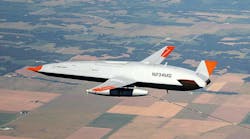Geospatial technologies involve tools and techniques for land surveying, remote sensing, cartography, geographic information systems (GIS), satellite navigation, photogrammetry, geography and related forms of Earth mapping.
The largest portion of spending over the next five years -- $900.1 million -- will be allotted to engineering and integration initiatives, Frost & Sullivan analysts say.
The U.S. Department of Defense (DOD) is capitalizing innovations in geospatial technologies to ensure commanders at every level have a deeper understanding of evolving operational environments, analysts explain.
Related: NVIDIA launches GPU-accelerated platform for geospatial intelligence analysts
Geospatial products that could help with modeling and simulation can enhance the ability of military commanders and civilian emergency responders to view target areas from the same aspect and at the same time.
Rapid progress in geospatial technologies have come from advances and blending of computers and software technologies with airborne and space observation remote sensing.
In addition to military and emergency responders, applications of geospatial technologies include air navigation; archaeology; coastal mapping; land management; seismic interpretation; urban planning; oceanography; meteorology; cartography; land surveying; LIDAR; and digital terrain modelling.
The DOD will look primarily to expand capabilities for collection, processing and creation of data depicting the physical and human terrain. Military experts also will spend to strengthen relationships in time and space as well as develop network-centric mission applications that integrate information arising from sensors, signal/image processors, and other sources.
Related: SPECIAL REPORT: Geospatial imagery is essential
“After engineering and integration, improvements in dissemination and targeting will command the most attention, with spending in 2018 likely to stand at $712.6 million and $579.4 million respectively,” says John Hernandez, senior industry analyst at Frost & Sullivan. The market research firm outlines its predictions in the report US Defense Geospatial Market.
“For targeting, $200 million will be invested to procure a base operations geospatial library that will upgrade a worldwide digital repository of geospatial intelligence products obtained from various data sources at agency and service levels.”
The U.S. Air Force is the dominant U.S. military end user of geospatial technologies, awarding 46.6 percent of total government contracts, analysts say.
The Army and joint service organizations also are important end-user groups; the former is very receptive to emerging technologies and the latter has a high latitude for investment.
Related: Boeing introduces updated Geospatial Data Management Tool, DataMaster 5.1
The strong demand for 3-D geospatial products is encouraging the development of new light detection and ranging (LIDAR) technologies for defense and commercial use.
The U.S. Air Force is developing a cutting-edge LIDAR technology that expands mapping coverage in less time than current systems. Advances in LIDAR technology to automate the identification of natural and man-made terrain data also are under way.
“With such extensive efforts being made to introduce new technologies, it will not be long before geospatial tools become interactive to the point where they will not only offer a battlefield commander situational awareness, but also suggest possible or logical plans of action,” Hernandez says.
For more information contact Frost & Sullivan online at www.aerospace.frost.com.



